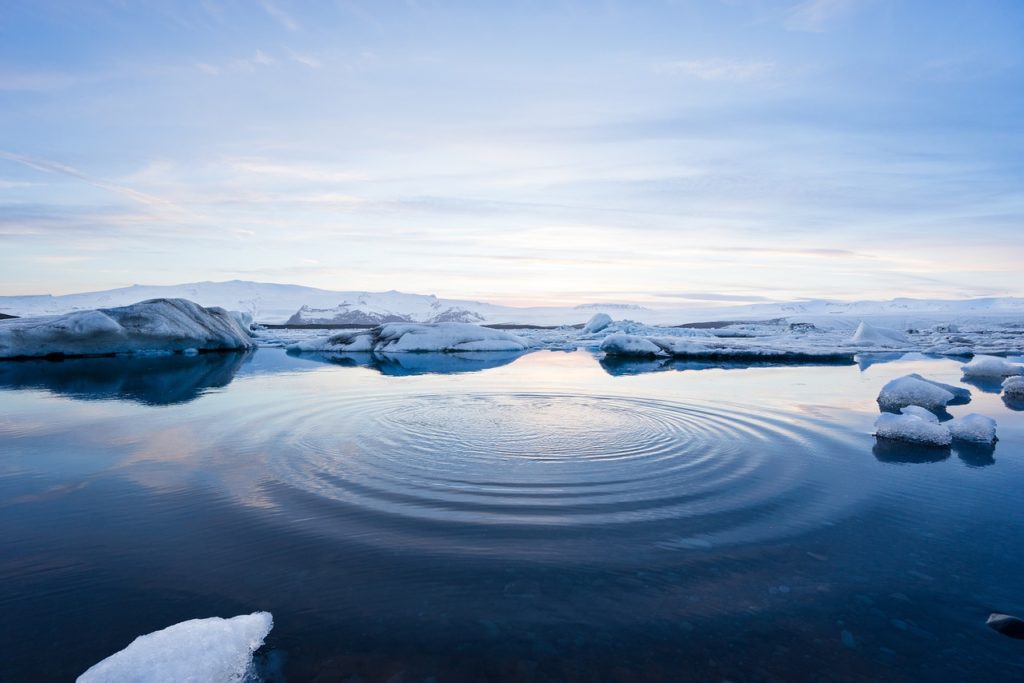 The Arctic’s climate is dramatically shifting to a new state – a warmer, wetter state where the summer ocean could be largely free of sea ice by the late 2030s, leaving Ice free Arctic by 2040 summer.
The Arctic’s climate is dramatically shifting to a new state – a warmer, wetter state where the summer ocean could be largely free of sea ice by the late 2030s, leaving Ice free Arctic by 2040 summer.
Previous scientific models didn’t expect this change to happen until 2070. But now, evidence is mounting that the Arctic will slip into this unprecedented state as early as 20 years from now. And we have the rising concentration of greenhouse gases and global warming to thank for that.
Shocking findings
- The thickness of ice in the central Arctic has declined by 65% between 1975 and 2012.
- The Arctic was at its warmest from 2011 to 2015 than at any time since scientists began monitoring temperatures in the 1990s.
- In January 2016 alone, the area was 5°C warmer than the average temperature for 1981–2010.
- And with every passing decade, the average number of days with sea ice cover is declining at a rate as high as 20 days
These findings have been chronicled in a new report by the Arctic Monitoring and Assessment Program (AMAP), the Conservation of Arctic Flora and Fauna (CAFF), and the International Arctic Science Committee (IASC). More than 90 scientists have contributed to this assessment called the Snow, Water, Ice and Permafrost in the Arctic (SWIPA). It was peer-reviewed by 28 experts.
Related: The frozen continent without ice: New Topography of Antarctica
Why you should be worried
The report notes that a recent economic analysis of the global costs of Arctic change estimated the cumulative cost $7–90 trillion over the period 2010–2100. So, if you are thinking the Inuit are the only people who need to be concerned about these impacts, you are wrong. Changes in the Arctic are going to impact all of us.
- Rising sea-levels: If you are resident of a coastal city anywhere in the world, you should know that the Arctic is responsible for 35% of global sea-level rise. The meltwater from the Arctic is expected to add 25 cm to sea-level rise between 2006 and 2100.
- Greenhouse gases: Even more alarming is the fact that almost 50% of the world’s soil carbon in contained in the Arctic soils. So, if the permafrost thaws, not only will methane emissions skyrocket, the amount of carbon dioxide absorbed by the Arctic will also be greatly impacted.
- Weather changes: By drawing warm ocean water from the south and sinking it to the ocean bottom, the Arctic acts as a global refrigerator. Scientists have found that the changes in the Arctic’s state are disturbing weather patterns in lower latitudes and influencing the monsoons in Southeast Asia.
- Ecosystem disruption: These changes will affect marine ecosystems and the populations of polar bears, walrus and other ice-dependent species. The occurrence of algal blooms will go up, which, in turn, will alter the diet of marine mammals and change predator-prey relationships.
So, what can we do? Well, the report notes that the Arctic is changing so fast that even if all the scenarios under the Paris Agreement are implemented, the Arctic in 2100 would still be considerably different from that of today. However, AMAP is working on an assessment on the strategies and actions that policy makers can adopt to mitigate these changes. This report will be released later this year. Don’t worry, we’ll keep you posted!
Now read: NASA time-lapse shows just how fast the Arctic sea ice is vanishing








